Want to see the northern lights? Good news: Experts predict years of awesome aurora viewing.
The northern lights, aka the aurora borealis, have been appearing more frequently in the night sky over the United States recently. In late April, for example, a stunning aurora display was seen as far south as Arkansas in the South and Arizona in the West. And a more modest event occurred this week.
So why the uptick in aurora sightings? And is this expected to continue?
Well, if you love the aurora, you're in luck, as it may be coming to a sky near you more often over the next few years thanks to the so-called "solar maximum," which occurs in 2025.
"There have been an increase in aurora seen in general on Earth," Shannon Schmoll, the director of the Abrams Planetarium at Michigan State University told USA TODAY. "The sun has been more active, resulting in more solar storms that cause solar flares and coronal mass ejections (CME).
"The material released during these solar flares and CMEs interact with the Earth's magnetic field and excite particles in our atmosphere resulting in a beautiful light show in our sky known as the aurora," she said.
Northern lights photos:See aurora borealis light up skies across several states
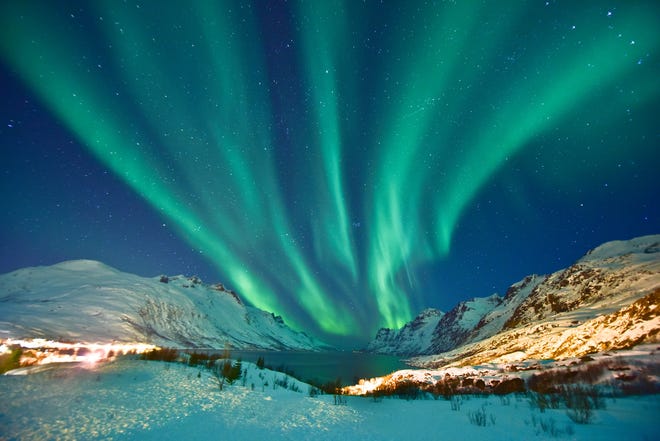
What are the northern lights?
The aurora forms when the particles flowing from the sun get caught up in the Earth's magnetic field. The particles interact with molecules of atmospheric gases to cause the famed glowing green and reddish colors of the aurora, according to NASA.
The composition and density of the atmosphere and the altitude of the collisions determine the colors of the lights, the University of Alaska, Fairbanks, said. "The aurora is most often seen as a striking green, but it also occasionally shows off other colors, ranging from red to pink or blue to purple." the University said on its website.
The lights are visible in both the far northern and southern parts of the world. The southern lights are known as the aurora australis.
More aurora news:Northern lights expected Thursday night in US. Here's where and when to see the aurora.
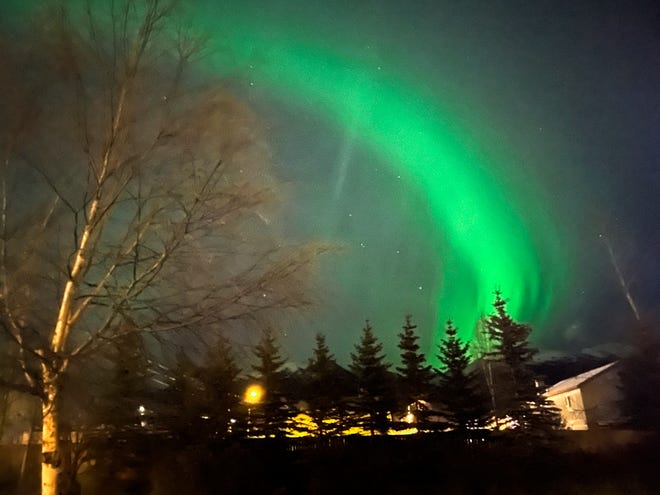
What are solar cycles? What is the solar maximum?
Solar cycles track the activity level of the sun, our nearest star. A cycle is traditionally measured by the rise and fall in the number of sunspots, but it also coincides with increases in solar flares, coronal mass ejections, radio emissions and other forms of space weather.
"The sun has an 11-year cycle where it goes through maximum and minimum," said Schmoll. "This results in the number of sunspots seen on the sun. Sunspots result from areas of the sun that have stronger magnetic fields."
The number of sunspots on the sun's surface changes on a fairly regular cycle, which scientists refer to as the sun's 11-year cycle variation. Sunspot activity, and hence auroral activity, tends to peak every 11 years.
Scientists use sunspots to track solar cycle progress, NASA said. The dark blotches on the sun are associated with solar activity, often as the origins for giant explosions – such as solar flares or coronal mass ejections – that can spew light, energy and solar material into space.
"This material and radiation is what interacts with the Earth resulting in aurora," Schmoll said.
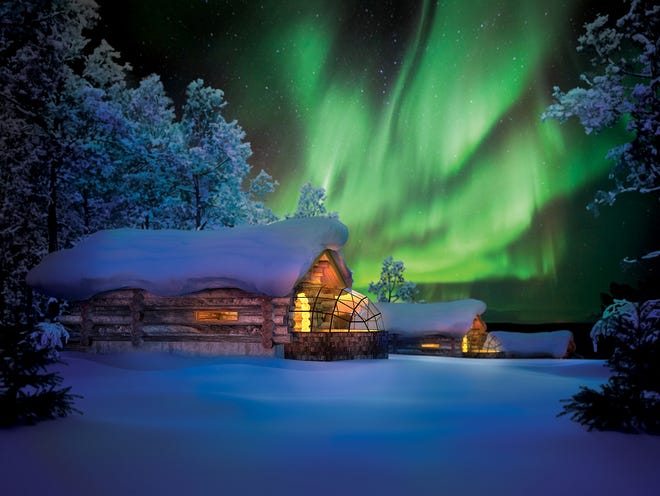
When is the next solar maximum?
Scientists have forecasted the next peak of solar activity (the solar maximum) will be reached in July 2025, NASA said. Thus, as we approach the solar maximum, we'll start to see more intense more frequent aurora.
The last solar maximum was in 2014; The chances of seeing the aurora at lower latitudes increase when the sunspot cycle is at a maximum.
“When we’re in the minimum part of the solar cycle, the sun is very quiet, basically nothing going on,” Taylor Cameron, a research scientist with the Canadian Hazards Information Service, told the New York Times. “And then at maximum, we’ve got lots of solar flares, lots of coronal mass ejections. The sun is just much more active.”
The current cycle started in 2019, he added.
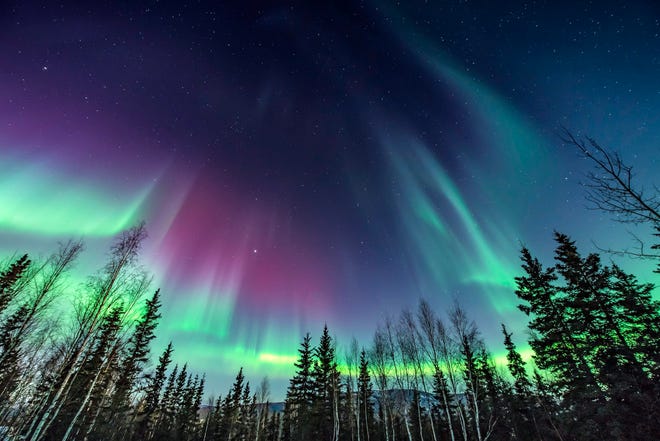
The sun has been surprisingly active, defying predictions
The Solar Cycle 25 Prediction Panel, an international group of experts co-sponsored by NASA and NOAA, predicted that this would be a below-average solar cycle, like the one before it – Solar Cycle 24. However, the sun has been much more active this cycle than anticipated, said Nicola Fox, director of NASA’s Heliophysics Division.
"With more activity comes an increase in space weather events including solar flares and solar eruptions, which can impact radio communications, electric power grids, and navigation signals, as well as pose risks to spacecraft and astronauts," Fox said.
Where can you see the northern lights? When is it most common?
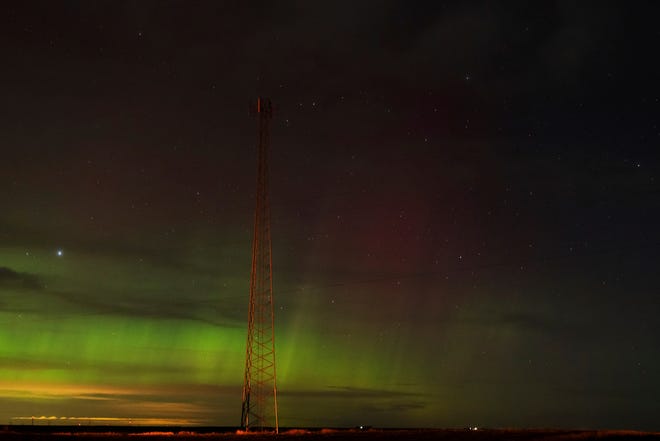
According to the University of Alaska, Fairbanks, the best places to view aurora are high northern latitudes during the winter in Alaska, Canada, and Scandinavia.
Furthermore, there is quite strong (but poorly understood) tendency for auroral activity to be stronger at the equinox than it is at solstice, according to the University. "This so-called “Russell-McPherron effect” means that the statistical likelihood of seeing aurora over interior Alaska, for instance, is roughly twice as high at equinox as it is at solstice."
In addition, combined with a slight preference for better weather in spring than in fall, this means that late February to early April are usually considered the best aurora viewing months in Alaska.
During very large auroral events, the aurora may be seen throughout the U.S. and Europe, but these events are rare. During an extreme event in 1958, the aurora was visible from Mexico City, the University of Alaska reported.
The aurora will be stronger
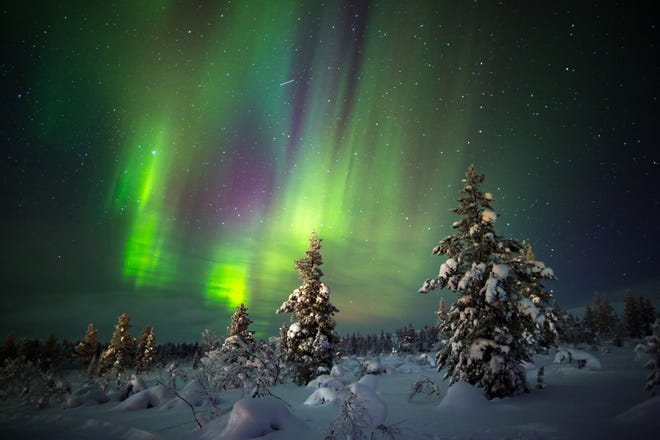
We're just at the beginning of the most active part of this cycle, Bill Archer, a mission scientist with the Canadian Space Agency, told the CBC. As the sun becomes more active, looking to peak in activity in 2025, he said that we could see some of the strongest storms in years.
"Right now we're moving into a solar maximum, which means it's more likely that things like that are going to happen," he said, referring to a spectacular auroral display in March in Canada.
"Not only will we see more auroras, but the aurora that we see will be stronger," Archer told the CBC.
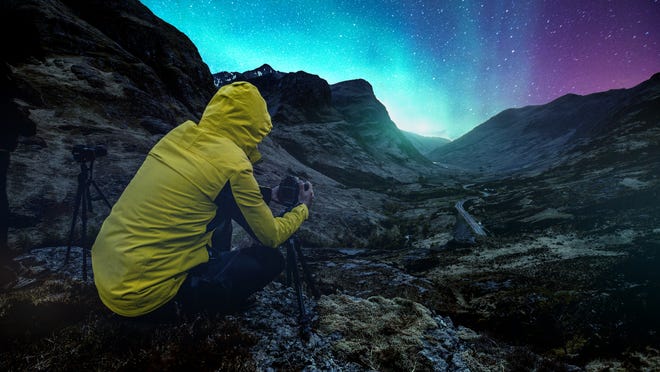
No comments: